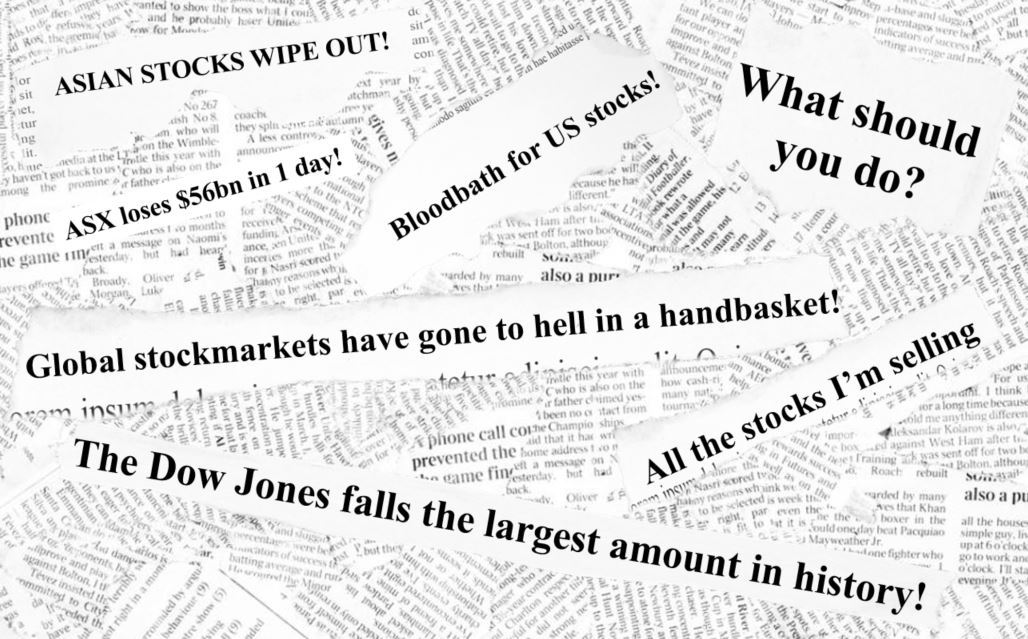Whoa! slow down! Let’s get some perspective. The snippets above are just some of the thousands of ‘click-bait’ headlines from the online news sites in the last 48 hours. If they’re to be believed then we’re all doomed.
Headlines
Of the headlines above, my favourite one was ‘The Dow Jones falls the largest amount in history’. A personal note to the journalist who originally penned this article – you were partly right and also terribly wrong. Yes, the Dow Jones intraday fall of almost 1,600 points was the biggest points fall, but it did increase over 6,000 points in the 12 months before. It’s hard to argue that this “largest fall” – a 4.6% decline – was worse than say the 22% decline on 19th October 1987 (Black Monday), the 13% decline on 28th October 1929 (Black Tuesday) or any of the many >5% drops through the last century. But then if you can’t use “lies, damned lies and statistics” to grab peoples’ attention then the ‘post-truth’ era isn’t for you.
Perspective
What many of these articles failed to convey is that the Dow Jones had just broken a new positive record, having just had 13 consecutive months of gains – something never seen before, or that it was up 31% for the year prior to the fall.
So, while these falls around the world are still large, remember that we usually have pullbacks of 5% at least three times a year, though granted, not always in the one day.
Another way to look at it is that the falls in the last few days have simply wiped out the gains we’d already witnessed in 2018. US markets are back to December levels (here in Australia we’ve given back the gains generated from mid-October 2017).
What next?
In our article 2017 Report Card and 2018 Outlook published 21 December 2017 we said we believed some equity markets had become stretched from a valuation perspective; preferring to hold an underweight to neutral position for US shares and higher levels of cash. The other prescient point was that any sharp lift in rising interest rate expectations was a likely catalyst for a market sell off, and that is exactly what we’ve witnessed.
Essentially the US Federal Reserve had been telling the market that it planned to lift interest rates gradually in 2018. But then came the news that US wages had increased at 2.9% pa. – well above expectations. So, if wages are rising higher than expected – then inflation must be coming through earlier than expected – which means the Fed must lift interest rates faster than expected. The upshot being that if rates move up quickly then share valuations become stretched faster. If I’m a trader I’d best sell.
Please keep in mind that large equity market crashes are usually accompanied by dire economic conditions and we’re well away from that. The global economy is still growing, wage rates and discretionary spending are slowly rising, unemployment continues to fall and central banks on the whole are still accommodative. Over the next 18 months we think we will see more
mini-corrections and subsequent rallies so now is the time to be nimble, be happy to hold cash and wait for opportunities to present themselves.
Keep Wealth Partners Pty Ltd (AFSL 494858). This information is of a general nature only and may not be relevant to your particular circumstances. The circumstances of each investor are different and you should seek advice from a financial planner who can consider if the strategies and products are right for you.







